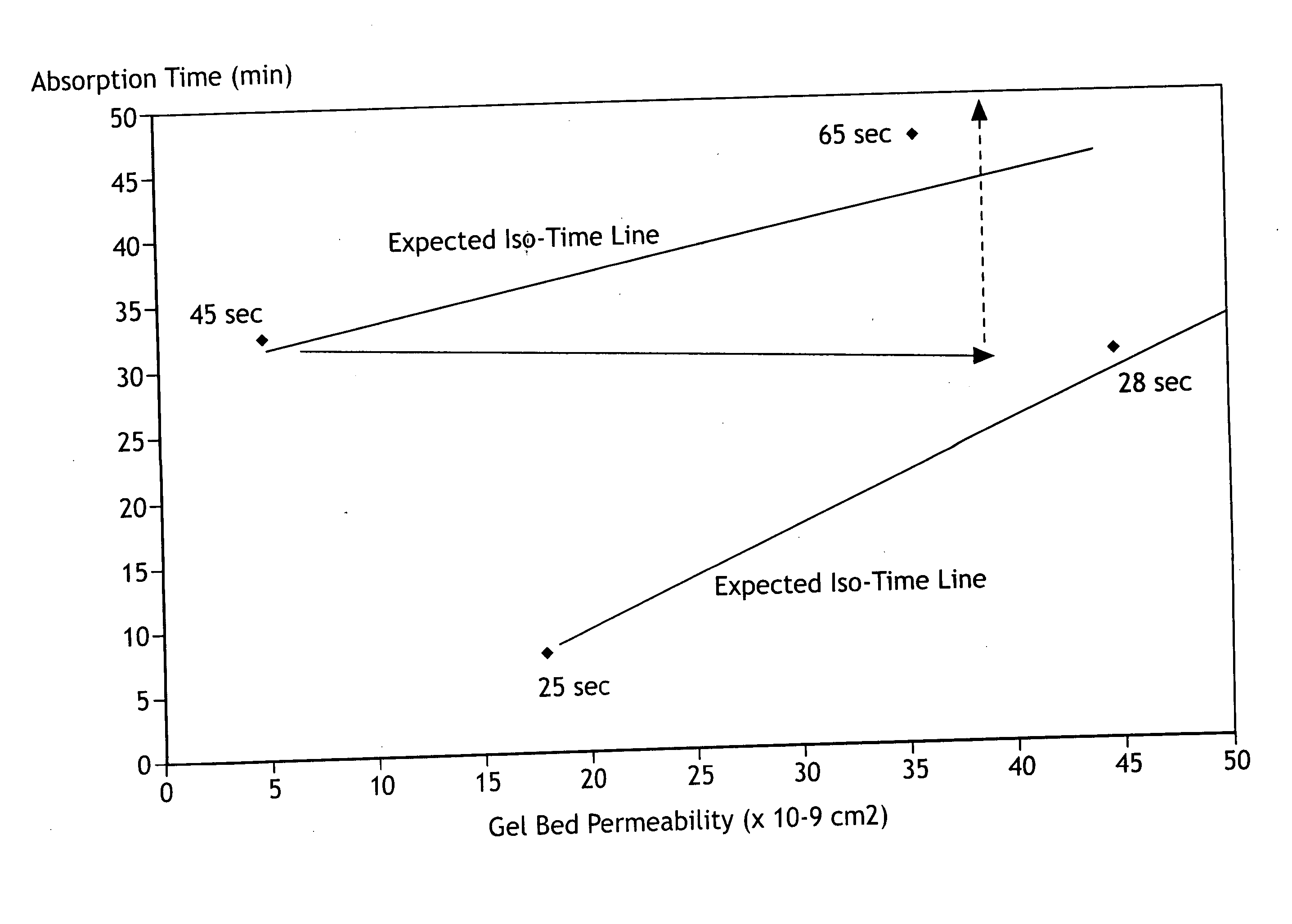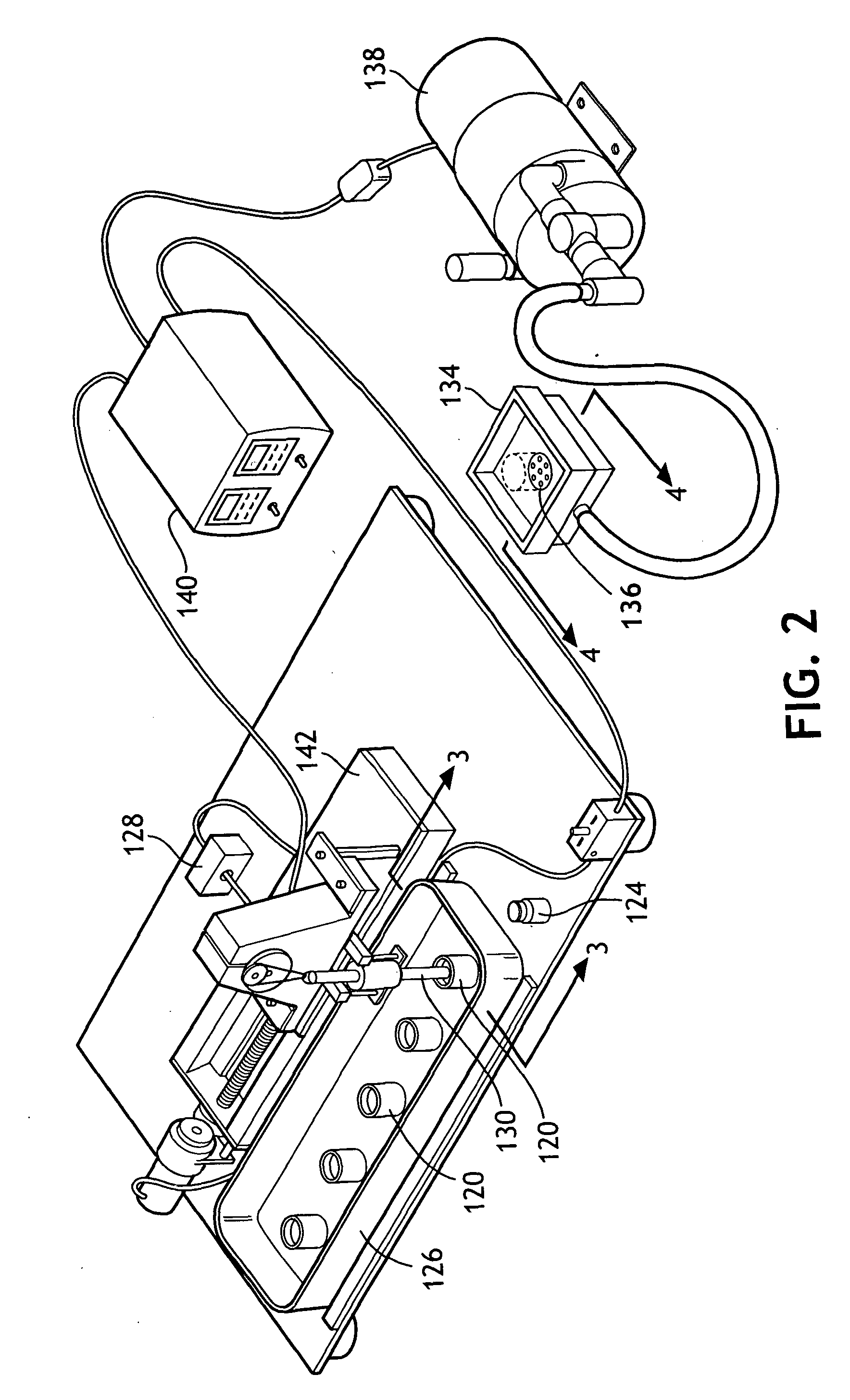Absorbent composites comprising superabsorbent materials with controlled rate behavior
a superabsorbent material and composite material technology, applied in the field of absorbent composite materials, can solve the problems of many superabsorbent materials being unable to absorb liquid, diapers with a high content of superabsorbent materials may still leak, and absorbent products often still suffer excessive leakage during use, etc., to achieve intake-friendly, reduce saturation, and improve liquid distribution
- Summary
- Abstract
- Description
- Claims
- Application Information
AI Technical Summary
Benefits of technology
Problems solved by technology
Method used
Image
Examples
example 1
A solution of 28 wt % acrylic acid in water is neutralized with sodium hydroxide to a degree of 60 mole % and with calcium hydroxide a further 10 mole % under constant cooling to maintain a temperature less than 40° C. 0.24 wt % polyethyleneglycol (300) diacrylate and 0.3 wt % allyloxypolyethyleneglycol-acrylate are added to the partially neutralized acrylic acid solution. After cooling to 5° C. and stripping the oxygen with nitrogen, the mixture is polymerized with standard radical chain polymerization techniques by the addition of 10 ppm ascorbic acid, 100 ppm 2,2′-azobis-(2-amidinopropane)dihydrochloride, 70 ppm hydrogen peroxide and 300 ppm sodium persulfate.
After completion of the polymerization (about 30 minutes), the resulting gel-like block is cut into small pieces and extruded through a die with 10 mm holes. The gel particles are then dried at 150° C. for 120 minutes in a forced air oven, reversing the air flow orientation to the polymer 180° after 30 minutes. The dried ...
example 2
A solution of 28 wt % acrylic acid in water is neutralized with sodium hydroxide to a degree of 50 mole % and with calcium hydroxide a further 20 mole % under constant cooling to maintain a temperature less than 40° C. 0.24 wt % polyethyleneglycol (300) diacrylate and 0.3 wt % allyloxypolyethyleneglycol-acrylate are added to the partially neutralized acrylic acid solution. After cooling to 5° C. and stripping the oxygen with nitrogen, the mixture is polymerized with standard radical chain polymerization techniques by the addition of 10 ppm ascorbic acid, 100 ppm 2,2′-azobis-(2-amidinopropane)dihydrochloride, 70 ppm hydrogen peroxide and 300 ppm sodium persulfate.
After completion of the polymerization (about 30 minutes), the resulting gel-like block is cut into small pieces and extruded through a die with 10 mm holes. The gel particles are then dried at 150° C. for 120 minutes in a forced air oven, reversing the air flow orientation to the polymer 180° after 30 minutes. The dried ...
example 3
A solution of 28 wt % acrylic acid in water is neutralized with sodium hydroxide to a degree of 30 mole % and with calcium hydroxide a further 40 mole % under constant cooling to maintain a temperature less than 40° C. 0.24 wt % polyethyleneglycol (300) diacrylate and 0.3 wt % allyloxypolyethyleneglycol-acrylate are added to the partially neutralized acrylic acid solution. After cooling to 5° C. and stripping the oxygen with nitrogen, the mixture is polymerized with standard radical chain polymerization techniques by the addition of 10 ppm ascorbic acid, 100 ppm 2,2′-azobis-(2-amidinopropane)dihydrochloride, 70 ppm hydrogen peroxide and 300 ppm sodium persulfate.
After completion of the polymerization (about 30 minutes), the resulting gel-like block is cut into small pieces and extruded through a die with 10 mm holes. The gel particles are then dried at 150° C. for 120 minutes in a forced air oven, reversing the air flow orientation to the polymer 180° after 30 minutes. The dried ...
PUM
| Property | Measurement | Unit |
|---|---|---|
| temperature | aaaaa | aaaaa |
| particle size | aaaaa | aaaaa |
| particle size | aaaaa | aaaaa |
Abstract
Description
Claims
Application Information
 Login to View More
Login to View More - R&D
- Intellectual Property
- Life Sciences
- Materials
- Tech Scout
- Unparalleled Data Quality
- Higher Quality Content
- 60% Fewer Hallucinations
Browse by: Latest US Patents, China's latest patents, Technical Efficacy Thesaurus, Application Domain, Technology Topic, Popular Technical Reports.
© 2025 PatSnap. All rights reserved.Legal|Privacy policy|Modern Slavery Act Transparency Statement|Sitemap|About US| Contact US: help@patsnap.com



